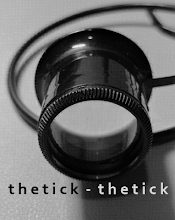Horology, what? I believe many watch enthusiasts do not know what it means. From wikipedia: Horology (from Greek ώρα, "hour, time"; and λόγος, logos, "study, speech"; lit. the study of time) is the art or science of measuring time. Clocks, watches, clockwork, sundials, clepsydras, timers, time recorders and marine chronometers are all examples of instruments used to measure time. I am not a horology doctorate to elaborate this terminology. Precisely it should be enough for watch enthusiast like me (may be you too) to understand!
Not everyone can remember their first time telling gadget! I still remember. I got one when I was 10 years old, not as a birthday gift from my beloved father (late father, May God bless him) but something I need because most of my friend has it. I pester him to buy! I grow up in a lower-middle income group in Kuala Lumpur (KL), the capital city of Malaysia. For ordinary family like us living in KL in the 70s, Chow Kit is the best place to shop. That is where I got my first watch. The watch shop still exists - near to the pedestrians crossing bridge same row with the Bata shop. My father bought me a Citizen Digital Quartz watch. I can’t remember exactly how it looks like but similar model is still available in the market today. It comes with LCD (liquid crystal display); digital number to tell time, day and date; and two or three integrated push buttons around the watch case. The most interesting feature was that it produces digital alarm… tit-tit, tit-tit, tit-tit!
The 70s marked the era of quartz watches driven by the Japanese watch companies. The advent starts after Seiko invented the first quartz wristwatch named the Seiko-Astron (circa 1969).
Through out my school years, I own several quartz watches mostly the dominant Japanese brands – Seiko, Citizen, Adec, Orient, and Casio. These are digital and analog quartz watches and they are cheap watches that I can afford to have.
As I pursue my tertiary education, I got extra spending power with some part time job and scholarship. I bought my first Swiss Made watch – a Zodiac quartz watch that cost me a couple of hundred (almost RM700.00). I still have the photo, but not the watch anymore. After several years, I sell it to Cash Converter. I turn it into cash to buy another watch. What I learn from having this Swiss quartz time piece is the impetus for me to learn more about watches! Hence, bring me into the true horological world.
At one time, my Zodiac runs slow. It does not tell the time accurately. Then I find out from one of the watch repairer that it needs new battery (as quartz watch powered by battery). OK, let it replaced. Surprisingly, not even a year after the battery replaced the watch shows inaccurate timing with inconsistent move on the second hand (watch hands). I went to another shop and the watch repairer told me that Swiss quartz watch use Swiss battery! The one replaced earlier was a Japanese made battery. No wonder (lesson learned!). The watch was then replaced with a new Swiss standard ‘Renata’ battery.
Left: The Blue Zodiac is a "twin-design" to Tag Heuer Formula 1. Right: The famous Citizen Digi-Ana Combo Chronograph.
I have other quartz watches with me and the Zodiac strap on my wrist as my alternate sport watch. I have Citizen “digi-ana combo” (famous in the late 80s) which I use more frequent. After sometime I found that my Zodiac didn’t move at all! Must be the battery dry-out! I took the watch to another watch repairer. This time I learn a costly lesson. The battery run-out for more than a year and it was never taken out from the watch. The cell battery acid was discharged and affecting the circuit in the quartz movement (movement, many call it engine!). As a result, I was proposed to change the watch movement with a new one! With workmanship charges, it cost me around RM80. Another question! Why the Swiss quartz watch so expensive but the movement so cheap? The watch repairer told me that most of the Swiss made quartz watches are using ETA movement. The ETA movement is common to Swiss made quartz watches and watch price depends on the brand popularity.
Lastly, I decided to sell my Zodiac for cash so I could buy another watch. At time when I make my offer to sell at Cash Converter outlet I learn the most valuable lesson - the value of a watch. My offer comes complete with box, additional bracelet, papers, and certificate of purchase. The purchase value was less than RM200 although it was well maintained, cleaned, and show accurate time-keeping. “Sir, although yours is a Swiss made branded watch, it is a quartz watch and quartz watches relatively do not have good resale value compared to mechanical watches”, the counter staff at Cash Converter told me.
I guess this story is enough to start my blogging subject on horology. It is my true experience, the impetus that brings me deeper in getting to know about watches, chronometer, and horology. All the jargons and terminology written at the above will be further explained in my next article. Stay tune! Blogging starts ticking... tick, tick, tick...









